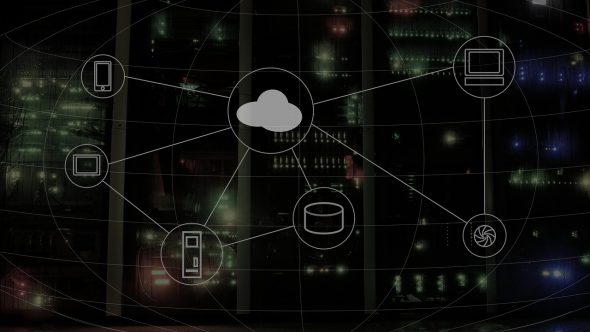Sign up to our Newsletter
As cloud storage becomes more common, concerns about cloud security are on the rise as well. The core question a lot IT professionals ask is: is cloud computing secure?
How One AI-Driven Media Platform Cut EBS Costs for AWS ASGs by 48%

The answer to this question is multi-layered, but in short we can say: yes it is – if you make sure you adopt the best security practices and policies.
Cloud computing continues to transform the way organizations use, store, and share data, applications, and workloads. It has also introduced a host of new security threats and challenges. With so much data going into the cloud—and into public cloud services in particular—these resources become natural targets for bad actors.
So it’s completely understandable that a lot of people have concerns about how secure the cloud is. With headlines populated with reports of security breaches, securing the cloud can seem like an almost impossible task.
Indeed, enterprises express mixed feelings about security in the cloud despite wide-scale adoption. More than 90 percent of enterprises in the United States use the Cloud, and 52 percent of small and medium-sized businesses (SMBs) use the cloud specifically for storage.
Clearly, there are myths that cloud computing is inherently less secure than traditional approaches. The paranoia is due largely to the fact that the approach itself feels insecure, with your data stored on servers and systems you don’t own or control. However, cloud computing security offers a range of security options to make sure your data is encrypted and safely stored.
Before we go into intricacies of cloud security, let’s first take a look at the traditional IT security model, so we can compare the two.
Traditional IT security model
Traditional IT security is seen as in-house security, or on-site security. In other words, it’s the techologies in place within an organization’s site that are used to protect the information saved on-site.
This infrastructure may be protected by any of the following:
- Physical means
- Firewalls
- Network separation
- Appropriate user ID and password management
- Security patch management
- Harmful code software
- Vulnerability scanning
- System security checking
- Encryption of sensitive data and network traffic
- Intrusion detection and prevention systems
- Unauthorized activity monitoring
- Logging and alerting
- Employee IT security awareness education
Securing the security perimeter of the traditional data centre was made relatively straightforward with the help of firewalls and intrusion detection systems. When we traded terminals for PCs, anti-virus software helped keep those devices safe.
With employees, customers, business partners, suppliers and contractors increasingly accessing corporate applications and data with mobile devices from the cloud, protecting the edge of the network is no longer enough. As the traditional perimeter disappears, companies need to adopt new security strategies.
Cloud computing security
Cloud computing security or, more simply, cloud security refers to a broad set of policies, technologies, and controls deployed to protect data, applications, and the associated infrastructure of cloud computing.
The cloud provides users with capabilities to store and process their data in third-party data centers.Organizations use the cloud in a variety of different service models (with acronyms such as SaaS,PaaS, and IaaS) and deployment models (private, public, hybrid, and community).
Concerns associated with cloud computing security fall into two broad categories:
- Security issues faced by cloud providers (organizations providing software-, platform-, or infrastructure-as-a-service via the cloud)
- Security issues faced by their customers (companies or organizations who host applications or store data on the cloud)
The responsibility is shared, however. The provider must ensure that their infrastructure is secure and that their clients’ data and applications are protected, while the user must take measures to fortify their application and use strong passwords and authentication measures.
Commercial cloud storage systems encode each user’s data with a specific encryption key. Without it, the files look like gibberish, rather than meaningful data.
But who has the key? It can be stored either by the service itself, or by individual users. Most services keep the key themselves, letting their systems see and process user data, such as indexing data for future searches. These services also access the key when a user logs in with a password, unlocking the data so the person can use it. This is much more convenient than having users keep the keys themselves.
Cloud security features
1. Controlled Access
When data is stored off-site in the cloud, employees, vendors and visitors are physically separated from a company’s mission-critical data.
This lack of physical access makes it more difficult for third parties to stumble across data and use it negatively. The amount of human risk decreases.
2. Cyber Security Expertise
CSPs specialize in keeping data safe. Cloud infrastructure is monitored at all times in order to head off potential security threats.
With the cloud, you get access not only to the best data centers but also to highly skilled IT professionals.
3. Thorough and Frequent Auditing
CSPs undergo yearly audits to protect against flaws in their security systems. However, on-premise, legacy systems do not have this requirement. Additionally, legacy systems can be difficult to update, especially as they grow alongside the company.
Cloud security challenges
The challenge exists not in the security of the cloud itself, but in the policies and technologies for security and control of the technology. In nearly all cases, it is the user — not the cloud provider — who fails to manage the controls used to protect an organization’s data.
According to Gartner, through 2022, at least 95% of cloud security failures will be the customer’s fault.
Act on cloud predictions:
- In 2018, the 60% of enterprises that implement appropriate cloud visibility and control tools will experience one-third fewer security failures. Placing workloads in the cloud does not require a security trade-off. Enterprises actually benefit from the security built into the cloud.
- Through 2020, public cloud infrastructure as a service (IaaS) workloads will suffer at least 60% fewer security incidents than those in traditional data centers. CIOs should look to leverage the programmatic infrastructure of public cloud IaaS. Automating as much of the process as possible will remove the potential for human error — generally responsible for successful security attacks.
- Through 2022, at least 95% of cloud security failures will be the customer’s fault. CIOs can combat this by implementing and enforcing policies on cloud ownership, responsibility and risk acceptance. They should also be sure to follow a life cycle approach to cloud governance and put in place central management and monitoring planes to cover the inherent complexity of multicloud use.
Conclusion
The cloud is being adopted at increasing rate, and that trend will certainly continue. Various companies, especially large enterprises, adopt cloud infrastructure for several reasons, mostly for its scalability, stability and security. Cloud infrastructure offers many benefits. but it also presents certain challenges related to security.
These challenges can be overcome by adopting smart cloud security strategies which ensure reliable business operations by leveraging all the advantages the cloud offers.
If you have any questions about how to effectively adopt the cloud for your business, or how to optimize your cloud performance and reduce costs, contact us today to help you out with your performance and security needs.








